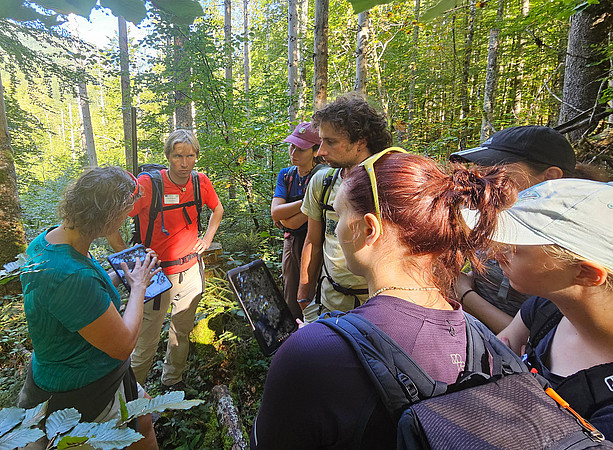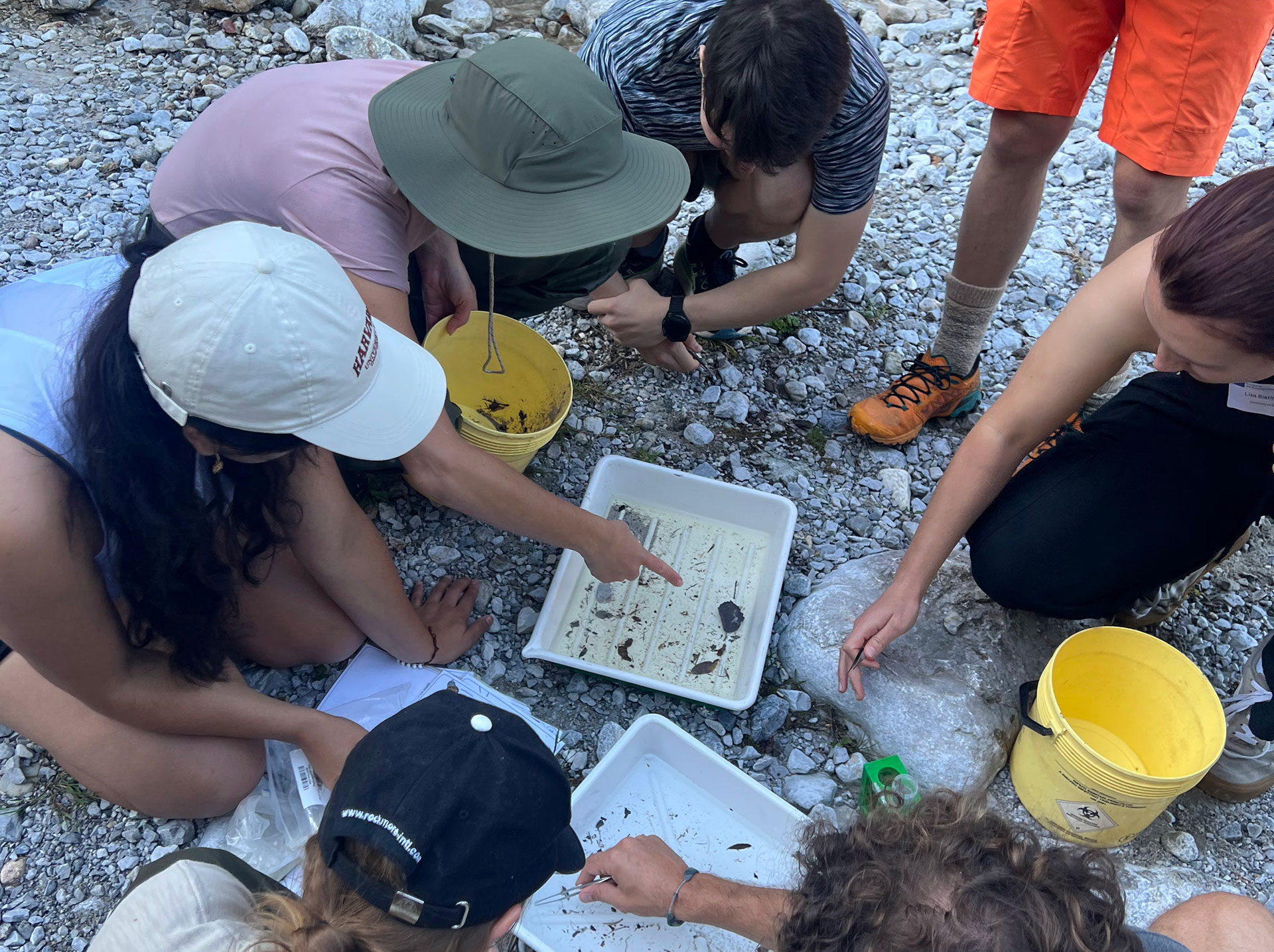From climate change and environmental toxins to land development, nature is exposed to many changes and threats. This makes protected areas, where humans give nature free rein, all the more important. These areas are also of interest to researchers because they allow them to observe relationships, such as those between climate change and the biodiversity of flora and fauna, ‘undisturbed’. For this reason, the University of Graz entered into a partnership with the Gesäuse National Park in Styria a little over a year ago. An international group of students has now also benefited from this collaboration. Out in the wilderness, they learned what is needed for the sustainable management of natural heritage and how management and monitoring work in protected areas.
One destination during the week-long excursion was the Johnsbach Valley, which has been the focus of intensive research for years. A dense network of measuring stations – part of the WegenerNet of the University of Graz – documents temperature, precipitation, snow and water levels there. The measurements provide an important data basis for climate research. At the same time, long-term monitoring of the biodiversity of forests, alpine pastures and water bodies is taking place in the Johnsbach Valley and the Gesäuse, supported by state-of-the-art remote sensing, for example via satellites. In addition, research is being conducted on groundwater structures and sediments, as well as studies on natural hazards such as avalanches and torrents. Furthermore, historical and current land use in the Eisenwurzen region and its influence on the population are being investigated.
BestNature educational project
The excursion took place as part of the “BestNature” educational project, funded by the ERASMUS+ programme. “We want to give young people a better understanding of the complexity of socio-ecological relationships directly on site. That's why it's so important for experts from different research areas to work together,” explains project and excursion leader Manuela Hirschmugl, remote sensing specialist at the Department of Geography and Regional Science at the University of Graz.
The BestNature Field Week 2025 was very well received by the students: “It was definitely a highlight of our studies,” says Moritz Thomaser. “We were able to try out many different methods of geography and biology. In addition to the technical content, it was above all the personal conversations and the cultural, international exchange that made the fieldwork week an unforgettable experience.” In addition to the excursion leader, scientific input from the University of Graz was provided by geographer Harald Zandler, biodiversity expert Christian Sturmbauer and hydrologists Martin Masten and Jasper Lammers.
The visit by the international study group also underlines the importance of protected areas as a space for research and learning. “I am particularly pleased that the cooperation between the University of Graz and the Gesäuse National Park has also led to an international exchange,” emphasises Alexander Maringer, head of research at the Gesäuse National Park.



